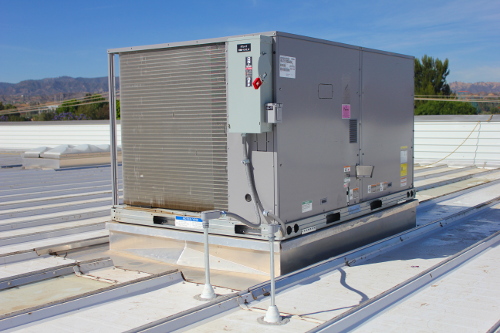Know Your Options
There are several choices to make when purchasing a metal building roof curb. Your evaluation should take into consideration the conditions on and around the roof:
- Roof panel make / model
- Roof Slope
- Weight of the roof equipment be installed on the curb
- Roof system warranty requirements
- Local weather conditions
- Sub Framing
Roof Panel Make / Model
Panel profile geometries must be taken into consideration when ordering a curb. Curbs should match the latest profiles to ensure a weather-tight fit. The preferred application is to have the flange and contour straps (caps) slide UNDER the roof panel on the upslope while the downslope flange and contour straps (caps) fit OVER the roof panel. This creates a shingle effect for proper watershed and is applicable on a Standing Seam, R-Panel or Insulated Panel roof.
Weight of the Roof Equipment
When it comes to skylights and units that weigh less than 1,500 lbs. a single metal building roof curb is generally sufficient. When mounting a unit that weighs over 1,500 lbs. you should consider moving to a nested or floating curb system. The inner curb is reinforced and rests on the structural foundation (purlins) while the outer curb is used to flash the curb system. Calculations may be required to demonstrate that the system has been engineered to support the weight of the rooftop unit.
Roof System Warranty Requirements
Standard metal building roof curb warranties are 1-5 years. Specific design requirements as specified by MBCI, Butler, Nucor (among others) will yield a 20-year weather-tightness warranty:
- Minimum up slope and down slope flange lengths
- Seam clip or layover side flanges
- A minimum sidewall clearance from seam or high rib
- All-aluminum construction
Only a handful of companies have achieved a 20/25-year weather-tightness warranty by one of the major Building Manufacturers – R&S is one of those companies. Please note these conditions only apply to a Standing Seam Roof systems.
Local Weather Conditions
Curb side flanges:
If the project is to be erected in a dry climate without severe weather conditions, you can save money by going with a metal building roof curb that features STANDARD 3” side flanges that fasten in the flat (pan) with washered long-life self-drillers. In these conditions you can typically use a galvanized constructed curb as rust is a low probability event.
In wet climates where there are long periods of time in which the curb is exposed to water and inclement weather, a Seam Clip Side Flange for Standing Seam Roofs or a Layover Side Flange for R-Panel Roofs is preferred. These flanges extend to the next natural Seam or High Rib eliminating the need to fasten in the pan of the roof panel. This curb type carries a slightly higher price but can definitely save you down the road.
Curb material construction:
Wet conditions may also prompt you to consider an aluminum curb construction. While galvanized steel is a more cost effective material, it is prone to rust – particularly where the corrosion-resistant coating is compromised (welds). Aluminum curbs carry roughly a 30% cost impact as compared to galvanized steel – but that is a bargain compared to a rip and replace.
Another option would be to apply a powder coat or Kynar finish to a galvanized steel curb; this is also an effective strategy to minimize the potential for rust. Take care to extensively inspect the exterior of the powder coat surface (especially near welds or raw edges) and touch up any exposed areas immediately.
A Word About Sub Framing
This is another area that is often overlooked by erectors that do not install curbs often. Sub-framing is required to secure and seal the flanges of the curb to the rooftop. There are several ways to achieve a proper sub-frame opening but it is important that it is done by an experienced fabricator.
Most curb companies offer their system as an option or include it in the final price. Either way, make sure you are very clear in terms of how the system installs and DON’T ASSUME it is not needed until you fully understand its function. R&S supplies this kit and prices it very competitively – even then it can at times seem like a superfluous cost. Take it from us, it is nothing of the sort. We’ve seen too many projects stalled or installed poorly due in part to a lack of proper sub-framing.
Conclusion
Hopefully you now see that all metal building curbs are not created equal. As an accessory product the importance of making the right decision is often overlooked as roof curbs are a small part of an overall budget. But make no mistake, the implication of selecting the wrong application is significant. If you are working on a project that requires rooftop units, do yourself a favor and research the company you choose to provide the curbs – they should ask the right questions in order to prescribe the right product for the job.



